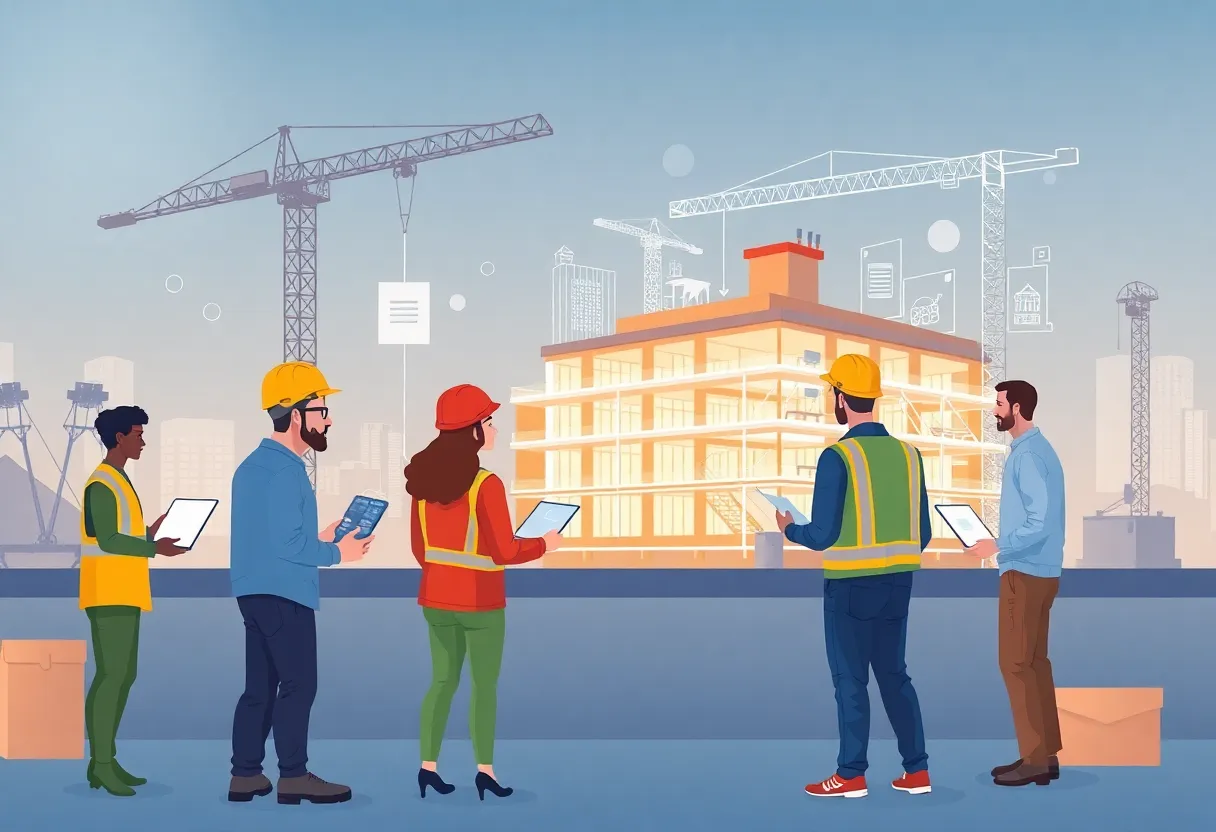News Summary
The construction industry in India is experiencing challenges with adopting Building Information Modeling (BIM), a transformative technology enhancing coordination and efficiency. Cultural barriers, such as the existing planning culture and value-engineering practices, hinder effective BIM implementation. Despite these hurdles, BIM offers significant benefits including improved workflow efficiency and collaboration. Experts advocate for the adoption of standards to enhance operations and energy efficiency, allowing for better integration in infrastructure projects. With ongoing efforts to address the challenges, there is potential for BIM to revolutionize the construction sector in India.
Challenges of Building Information Modeling (BIM) Adoption in India’s Construction Sector
Building Information Modeling (BIM) is widely recognized as a transformative technology in the construction sector. It is celebrated globally for its ability to boost coordination, budgeting, and overall efficiency. However, despite its acknowledged benefits, the adoption of BIM in India’s construction industry faces significant cultural barriers and technical limitations.
Primary Barrier to BIM Adoption
According to industry experts, the major hurdle impeding BIM adoption in India is not the technology itself, but rather the planning culture prevalent in the country. In traditional Indian construction practices, projects often begin with only the basic structural shell in place, leaving final design details to be resolved during the construction phase. This approach directly contradicts the operational philosophy of BIM, which requires the finalization of every aspect of a project before construction begins.
Understanding BIM Requirements
BIM is designed to ensure that everything is specified and agreed upon—ranging from the placement of electrical switches to the choice of finishes—prior to the start of construction. This systematic approach not only streamlines the construction process but also enhances the overall quality of the build. However, India’s customary practice of “value-engineering” during ongoing construction spikes challenges for BIM implementation.
The Role of Global Consultancies
Consultancies such as Arup are utilizing BIM to enhance workflow efficiency and automate design documentation across various disciplines. This technology is known to accelerate the design process by providing a single source of truth for project teams. With BIM, teams can rapidly iterate designs and validate choices, thus allowing for more informed decision-making and enhancing client satisfaction.
Global Standards and Collaboration
To further facilitate BIM adoption, global firms have developed standards aimed at improving data sharing and collaboration across regions. Arup’s Global Revit and Global Tekla Standards are examples that underscore the importance of shared standards and open data formats in driving industry innovation. These standards contribute to sustainable operations and improved energy efficiency, while also aiding in the creation of digital services.
Encouraging BIM Maturity
An independently supported BIM maturity measure is seen as critical for fostering a better understanding of BIM technology among clients. This is essential for bridging the knowledge gap and ultimately enhancing the technology’s adoption across the sector. BIM has shown its effectiveness in complex infrastructure projects, such as optimizing traffic flow at significant locations like the Berlin Funkturm, which necessitate collaboration among various disciplines.
Benefits of Collaboration through BIM
The collaborative capabilities offered by BIM allow diverse teams to engage effectively in international projects, despite geographical challenges. For instance, during the Marina Bay Sands project, BIM fostered collaborative efforts across multiple countries, showcasing the technology’s potential in large-scale developments. The automation and data management features of BIM lead to a reduction in repetitive tasks and substantially improve model quality.
Post-Completion Advantages
For asset owners, BIM models prove invaluable for operational efficiency once a project is completed. They facilitate easier integration of systems within existing buildings, as illustrated by the implementation of BIM at projects like 1 Finsbury Avenue in London. This post-project utility underscores the importance of embracing BIM in ongoing infrastructure efforts.
Strategic Role of BIM in Construction
The strategic application of BIM technology plays a crucial role in ensuring successful construction development. It aims to achieve continued efficiency and clarity in communication and reporting, thereby addressing challenges posed by elongated project timelines and complex team collaborations. As India navigates its path toward enhanced BIM adoption, recognizing and overcoming these cultural and technical hurdles will be vital for the future of the construction sector.
Deeper Dive: News & Info About This Topic
Additional Resources
- ArchDaily: Barriers to BIM in India
- Wikipedia: Building Information Modeling
- Economic Times: Autodesk BIM Suite
- Google Search: BIM adoption India
- Allied Market Research: BIM in Construction Market
- Encyclopedia Britannica: Building Information Modeling
- Realty Plus: Nemetschek India Collaboration
- ScienceDirect: Challenges in BIM Adoption
Author: Construction CA News
The CALIFORNIA STAFF WRITER represents the experienced team at constructioncanews.com, your go-to source for actionable local news and information in California and beyond. Specializing in "news you can use," we cover essential topics like product reviews for personal and business needs, local business directories, politics, real estate trends, neighborhood insights, and state news affecting the area—with deep expertise drawn from years of dedicated reporting and strong community input, including local press releases and business updates. We deliver top reporting on high-value events such as the Rose Parade, Coachella, Comic-Con, and the California State Fair. Our coverage extends to key organizations like the California Building Industry Association and Associated General Contractors of California, plus leading businesses in technology and entertainment that power the local economy such as Apple and Alphabet. As part of the broader network, including constructionnynews.com, constructiontxnews.com, and constructionflnews.com, we provide comprehensive, credible insights into the dynamic landscape across multiple states.




